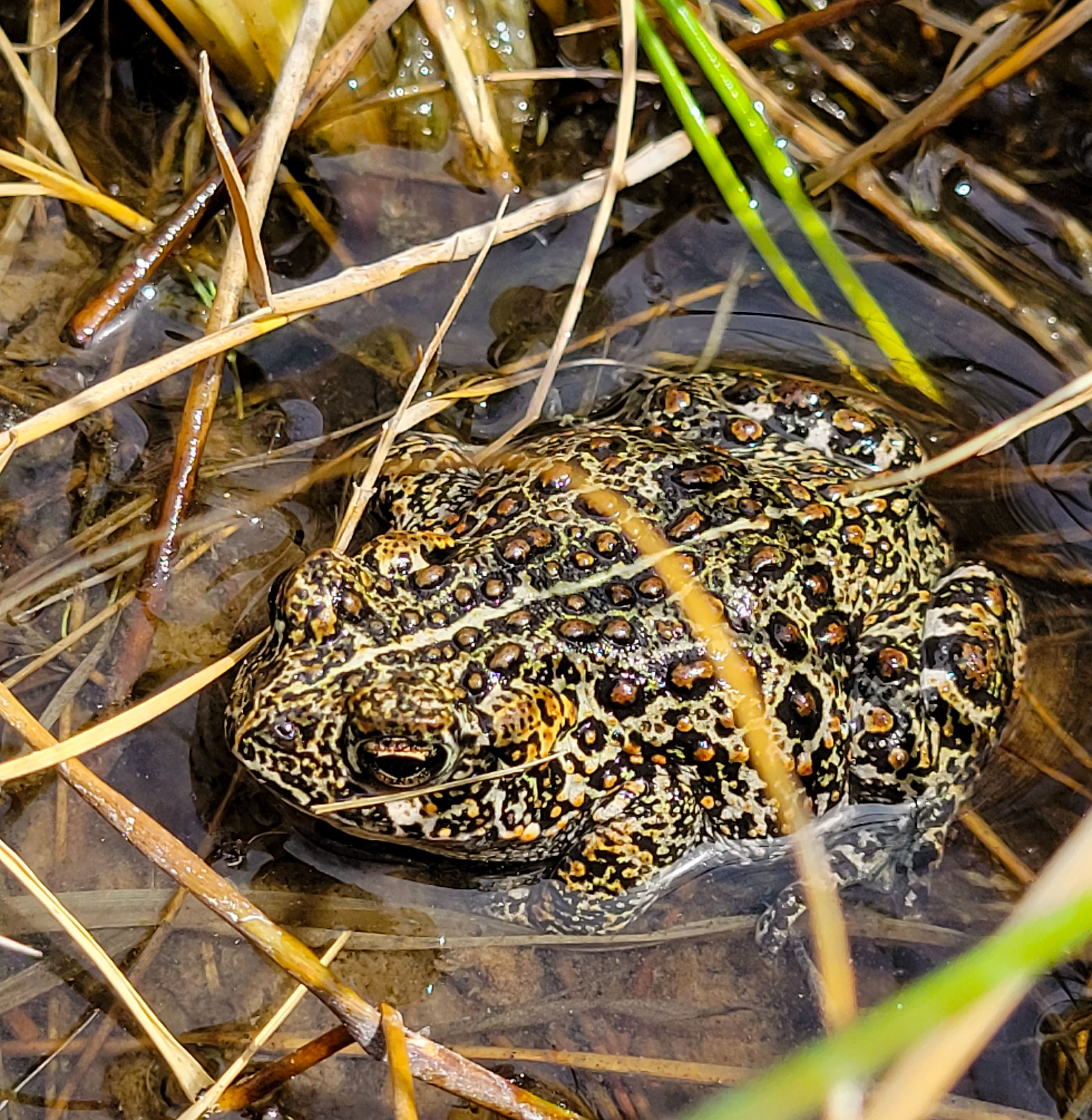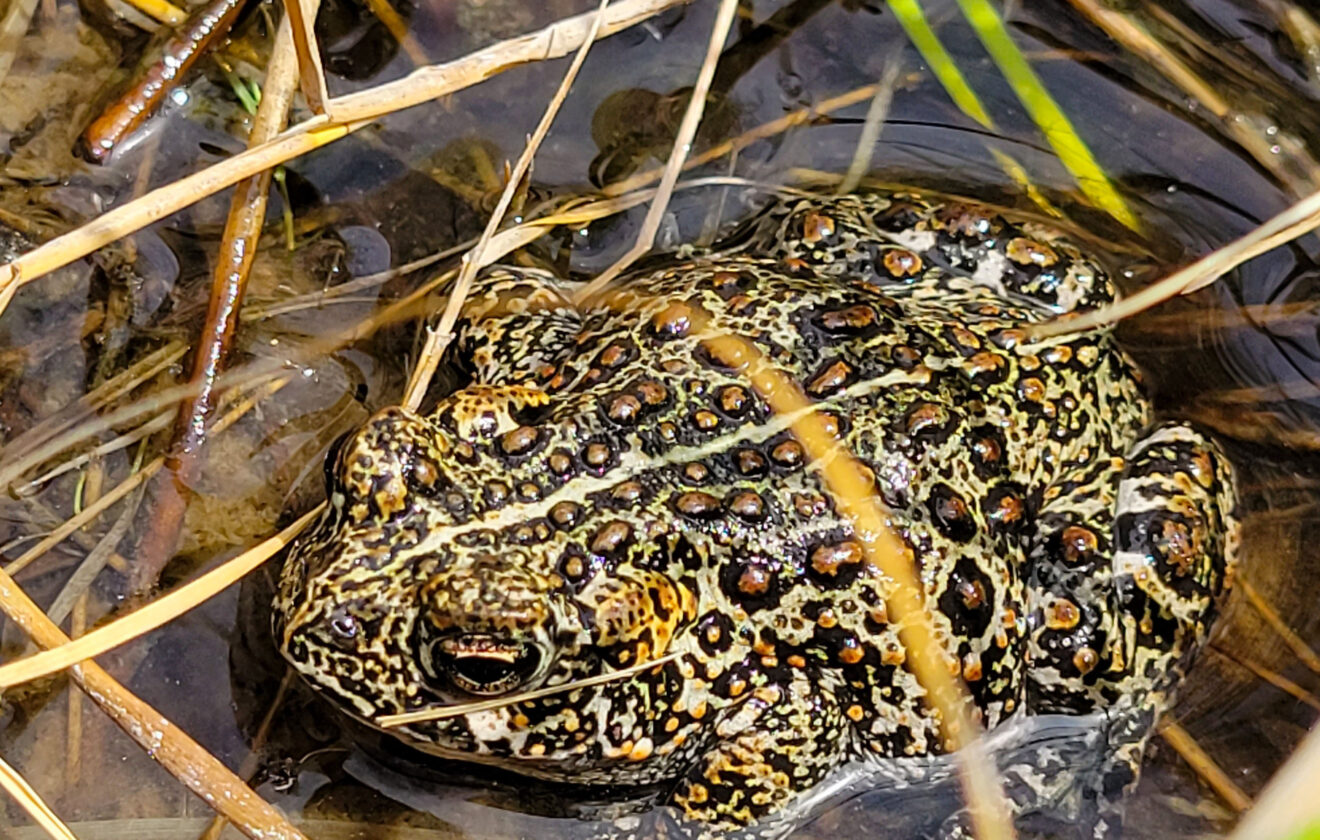- Introduction: The Secret Life of a Lesser-Known Amphibian
- Taxonomy and Classification: Situated in the Bufo Lineage
- Natural Habitat: Inhabiting the Colorado Plateau's Fragile Oasis
- Physical Characteristics: Small in Size, Big in Survival Adaptations
- Behavior and Life Cycle: The Quiet Lives of Streamside Specialists
- Ecological Role: Amphibian Guardians of the Plateau's Rivers and Streams
- Threats and Conservation Status: Challenges Facing a Hidden Amphibian
- Cultural and Scientific Significance: Small Frog, Big Impact
- Conclusion: Safeguarding the Future of <em>Anaxyrus williamsi</em>
Introduction: The Secret Life of a Lesser-Known Amphibian#
Within the rugged canyons and riparian corridors of the American Southwest, hidden beneath sleek river stones and nestled near gently murmuring streams, a small creature patiently awaits the cool embrace of twilight. Known scientifically as Anaxyrus williamsi, and commonly as the Colorado River toadlet or Williams’ toad, this diminutive amphibian often slips unnoticed past hikers and naturalists. Yet, despite its subtle size and cryptic daily habits, the Colorado River toadlet embodies a fascinating microcosm of evolutionary adaptation and ecological interdependence.
While other amphibians of the region catch our attention with loud choruses or outrageous coloration, Anaxyrus williamsi maintains a low profile, quietly serving its critical ecological role in the riparian ecosystems of the Colorado Plateau—habitats so fragile yet biologically rich. Just how has such a diminutive amphibian persisted in one of the most demanding habitats of North America? Let us step cautiously but eagerly into the world of Anaxyrus williamsi, exploring its ecological rhythms, curious behaviors, and the challenges that threaten its continued presence in these precious ecosystems.
Taxonomy and Classification: Situated in the Bufo Lineage#
Anaxyrus williamsi, formerly classified as Bufo williamsi, belongs to the Bufonidae family, commonly known as “true toads.” Originating from evolutionary lineages dating back millions of years, these amphibians have evolved considerable adaptations to diverse environmental conditions, occupying niches from temperate forests to arid desert washes.
Scientific inquiry has placed Anaxyrus williamsi firmly within the genus Anaxyrus, a classification reflective of modern genetic insights—and one distinguishing these North American toads from their Old World relatives. Its closest relatives include other regionally adapted toads such as the Red-spotted toad (Anaxyrus punctatus) and the Woodhouse’s toad (Anaxyrus woodhousii). Despite these close affiliations, the Colorado River toadlet is uniquely adapted to thrive in the demanding conditions of its specific southwestern habitats.
Natural Habitat: Inhabiting the Colorado Plateau’s Fragile Oasis#
Anaxyrus williamsi is found predominantly in the southwestern United States, with its range mainly confined to regions stretching across Arizona, Colorado, and Utah. Its preferred habitats run alongside streams and rivers of the Colorado Plateau, particularly within deep canyons with mesic (moist) microclimates. It’s in these narrow, shaded riparian areas—where desert and water briefly kiss at the edges—that this secretive creature flourishes.
The specific habitat choice of Anaxyrus williamsi provides it ample moisture, moderate temperatures, and ready access to insect prey—critical resources for an amphibian requiring moist skin for respiration and thermoregulation. To weave its life within this specialized mosaic of environmental conditions, the Colorado River toadlet seeks shelter during daytime beneath rocks, debris, leaf litter, or crevices, emerging at dusk to pursue its nocturnal activities beneath the quiet cover of darkness.
Physical Characteristics: Small in Size, Big in Survival Adaptations#
A subtle, marvelously adapted amphibian, adult Anaxyrus williamsi typically measure between 3.8 to 5.2 centimeters (1.5 to 2 inches) in length. Their diminutive size lures few eyes, allowing these toadlets easy concealment from predators and other dangers. Their bodies display a range of subtle earth tones—rich browns, muted olives, and subdued grays pepper their wart-covered skin, decorated by faint dark markings and blotches that perfectly mimic the river stones of their native environment.
Their skin texture, rough and warty like other true toads, serves a dual purpose: camouflage within the rocky riparian corridor, and deterrence of potential predators, through minute granulations of glands known as “parotoid glands” near their shoulders, capable of secreting mild toxins. Although these secretions are harmless to humans if handled gently, they afford Anaxyrus williamsi substantial protection from predation in its challenging environment.
Behavior and Life Cycle: The Quiet Lives of Streamside Specialists#
Nocturnal Foraging and Diet#
As dusk melts into night along the stream banks, these toadlets begin their nightly hunt. Their prey primarily includes a variety of small insects, spiders, and other invertebrates drawn to the moist habitats of riverbanks. Using strong hind limbs and rapid tongue movements, they deftly capture meals beneath the pale moonlight and starlight filtering into the narrow canyons of their habitat.
Mating Calls and Breeding Rituals#
The Colorado River toadlet engages in a modest yet distinctly charming breeding ceremony each spring. Males congregate along shallow pools or along slow-moving stream margins, softly calling out to potential mates with a series of musical, repetitive trills, reminiscent of gently bouncing marbles on metal. Following courtship rituals, fertilized eggs are deposited as gelatinous clusters within shallow, calm waters. The developing tadpoles spend several weeks maturing before metamorphosing into miniature versions of adult toadlets that quickly retreat to the margins to begin their terrestrial lives.
Ecological Role: Amphibian Guardians of the Plateau’s Rivers and Streams#
Often overshadowed by larger or more charismatic animal neighbors, Anaxyrus williamsi nonetheless remains an essential contributor to the ecological balance of Colorado Plateau streamside habitats. Its predation on insects helps keep insect populations balanced, thus influencing the health of plant life and even water quality through interconnected food webs.
Moreover, these toadlets serve as critical prey for larger amphibians, birds, reptiles, and small mammals, thereby feeding higher trophic levels of the riparian ecosystem. The presence of healthy populations of Anaxyrus williamsi also indicates good overall habitat quality, making them valuable “bioindicators” of environmental health, reflecting the state of these delicate natural zones.
Threats and Conservation Status: Challenges Facing a Hidden Amphibian#
Unfortunately, the Colorado River toadlet faces mounting threats from various anthropogenic pressures. Habitat degradation through increased recreational activity, water diversion, pollution, invasive plant species, and climate change-associated drought are primary drivers threatening its populations. Because of the subtle and somewhat secretive lifestyle of this species, its population status has historically received less attention, complicating accurate population assessments and conservation monitoring.
Currently, Anaxyrus williamsi is classified by conservation authorities as a species of concern, vulnerable to habitat changes. Conservation efforts are beginning to gain momentum, including habitat protections, educational outreach initiatives, and community-based conservation programs designed to protect critical riparian zones along the Colorado River drainage.
Cultural and Scientific Significance: Small Frog, Big Impact#
Few cultures have distinctly highlighted such a shy and cryptic amphibian, yet the unique biology of Anaxyrus williamsi has intrigued herpetologists for decades. Research into this species contributes to our broader understanding of ecosystem resilience and adaptation to extreme desert-edge habitats—insights that benefit broader conservation efforts throughout desert environments worldwide.
The Colorado River toadlet’s secretive nature itself makes it a compelling ambassador species, showcasing the need to protect overlooked yet critical ecosystem members. As one example among many hidden treasures of the Southwestern ecosystems, Anaxyrus williamsi serves a gentle yet powerful reminder of nature’s subtle complexity, urging us toward deeper stewardship of fragile, interconnected habitats.
Conclusion: Safeguarding the Future of Anaxyrus williamsi#
As we step quietly away from the softly babbling streams and narrow canyons where these enigmatic toadlets live, we carry forth a deeper awareness and heightened appreciation for the often-overlooked amphibians of our world. Conserving habitats for hidden creatures like Anaxyrus williamsi ultimately safeguards broader ecological integrity, affirming our responsibility to nature’s intricate tapestry.
Through awareness, education, habitat stewardship, and engaged conservation, we can help ensure that the quiet calls of the Colorado River toadlet continue to resonate softly beneath the desert night skies, singing gentle choruses of life and resilience amid the Southwest’s wild and precious environments.















